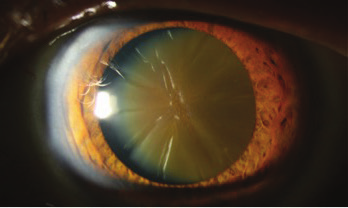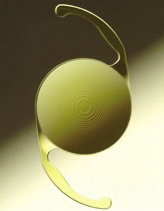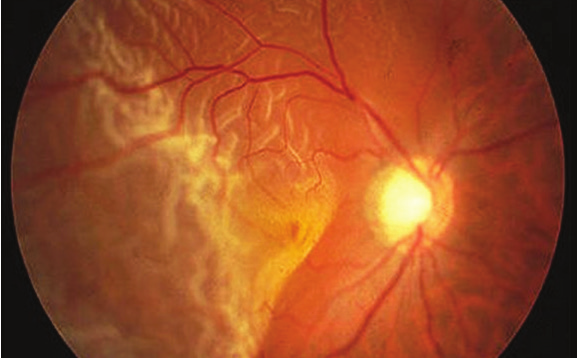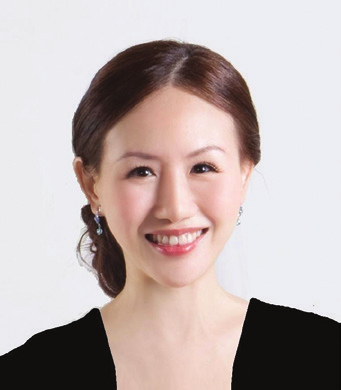
Cataracts: From Cloudy to Clear Skies by Dr Elaine Huang
If your vision’s getting blurry and a frequent change of prescription doesn’t help, it could be cataracts clouding your vision.
Causes of cataract progression
When eyes start to age, vision can start getting blurry for many reasons. One of them is cataract, which refers to a ‘clouding’ of the lens. The lens, which lies behind the iris and the pupil, lets light into the eye and adjusts to focus light onto the retina for clear vision.

Dense cataract affecting vision
Made up of water and protein, the lens is typically clear. As we age, the proteins clump, resulting in formation of a cloudy area in the lens. Over time, this cloudy area or cataract progresses, making vision less sharp.
One of the most common symptoms is cloudy or blurred vision. Previously bright colours now appear faded or dull. There are also excessive glare and haloes, as well as poor night vision.
If you suspect that you or your loved one has cataracts, seek immediate medical attention of an eye specialist. A complete eye examination will determine if there are any other factors contributing to the blurred vision.
While cataracts rarely require emergency surgery, you should not leave them unattended until vision is severely impaired. A simple and reasonably safe surgery can restore vision, making it safer to perform activities like driving and sports again.
Other factors that cause cataract progression include:
- Excessive exposure to sunlight and ultraviolet radiation
- Prolonged use of steroids
- Diabetes
- Previous eye surgery, infection, in?ammation or radiation
- Smoking
Cataracts can also happen to younger patients due to eye trauma, genetic factors or infections during pregnancy
Cataract Surgery
Cataract surgery is performed as a day surgery. It involves removing the clouded lens and replacing it with a clear arti? cial lens called an intraocular lens implant. The nurses will apply an anaesthetic eyedrop to numb your eye, and dilating eyedrops to facilitate removal of the cataract.
The surgery usually lasts 10 to 30 minutes and is almost painless. You will be mildly sedated, but you will still be able to hear your surgeon communicating with the nurses. After surgery, patients have very few restrictions and can return to normal activities within a week.

Lens implanted into the eye
Advances in cataract surgery
There have been many advances in cataract surgery to make the surgery more precise and safer. These have enabled patients to achieve better vision with less dependence on spectacles.
Newer lens implants can reduce the need for spectacles
Refractive errors (myopia, astigmatism) and presbyopia can be corrected with lens implants during cataract surgery. This can reduce the need to wear spectacles after surgery.

Multifocal lens implants
In suitable patients, multifocal lens implants are able to eliminate the need for glasses after the surgery.
Femtosecond laser assisted cataract surgery
This surgery allows surgeons to use laser instead of handheld tools for certain steps of the cataract surgery. This will result in higher precision and accuracy.
During femtosecond laser assisted cataract surgery, surgeons will use the laser to create a circular opening in the lens capsule (which allows for precise placement of the new lens implant), make incisions to correct astigmatism as well as soften the cataract and break it into smaller pieces (which allows for gentler, less power and more ? exibility in removal of the cataract).
The surgery takes about 30 minutes from start to ? nish, with the laser portion taking just a few minutes. This can be useful in certain situations, such as very hard cataracts, or abnormal corneas.
High-technology toric (astigmatic) implant axis alignment systems
High levels of astigmatism can be overcome with toric lens implants. To achieve excellent post surgery results with toric intraocular lenses, some systems use limbal registration to aid in accurate alignment, which captures a preoperative image and then recalls it during surgery. This will generate a target axis on the monitor or through the microscope. The use of these systems has reduced alignment errors by 50 percent over manual approaches.
After surgery
A clear protective shield will be placed over the operated eye, to be worn at night for about one to two weeks to prevent accidental trauma during sleep. Once the sedative effects wear out within an hour, you can go home.
Mild foreign body sensation is normal after cataract surgery. The visual improvement is almost instantaneous, and by the next morning, most patients are able to see down to the smallest letters on the distance chart without glasses. Reading ability without glasses is dependent on the type of intraocular lens implanted.
You will need to use eyedrops comprising of antibiotics and steroids for one month after the surgery.
ARTICLE ALSO WRITTEN BY DR ELAINE HUANG

Floaters: Possible Red-Flag Symptoms Of A Serious Eye Problem

MBBS (Singapore)
MMed (Ophthalmology)
(Singapore)
MRCS (Edinburgh)
FRCS (Edinburgh)
FAMS (Ophthalmology) (Singapore) (Gold Medallist)
Dr Elaine Huang is a senior consultant ophthalmologist who specialises in managing general ophthalmology conditions, glaucoma, complicated and advanced cataract surgery. She also has subspecialised expertise in managing vitreo-retinal conditions, macular disorders, diabetic retinopathy, age-related macular degeneration, myopia and trauma-related conditions. She was formerly an Adjunct Assistant Professor at the Singapore National Eye Centre (SNEC) and Duke-NUS Graduate Medical School.
EYE MAX CENTRE
38 Irrawaddy Road
#07-42
Mount Elizabeth Novena Hospital
Singapore 329563
Tel: (65) 6694 1000 / 8181 8563
